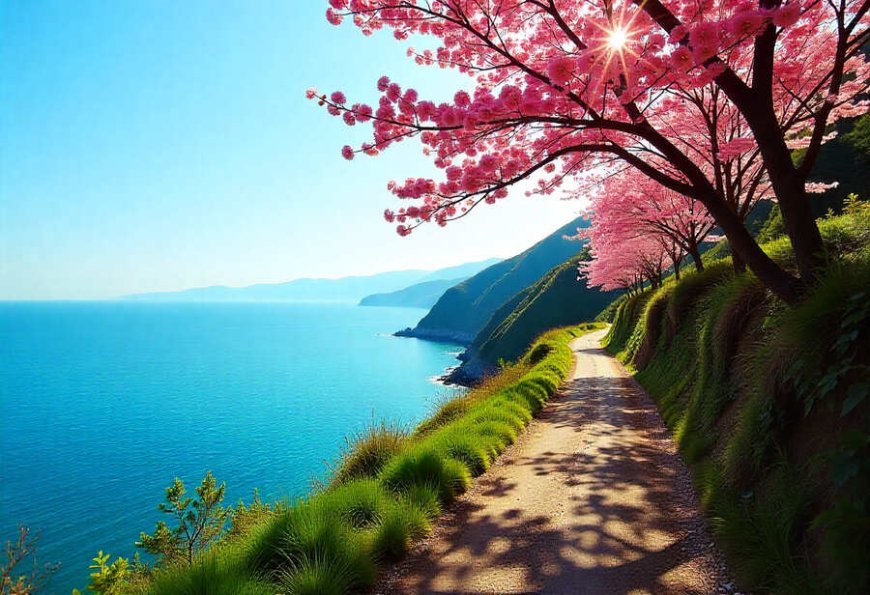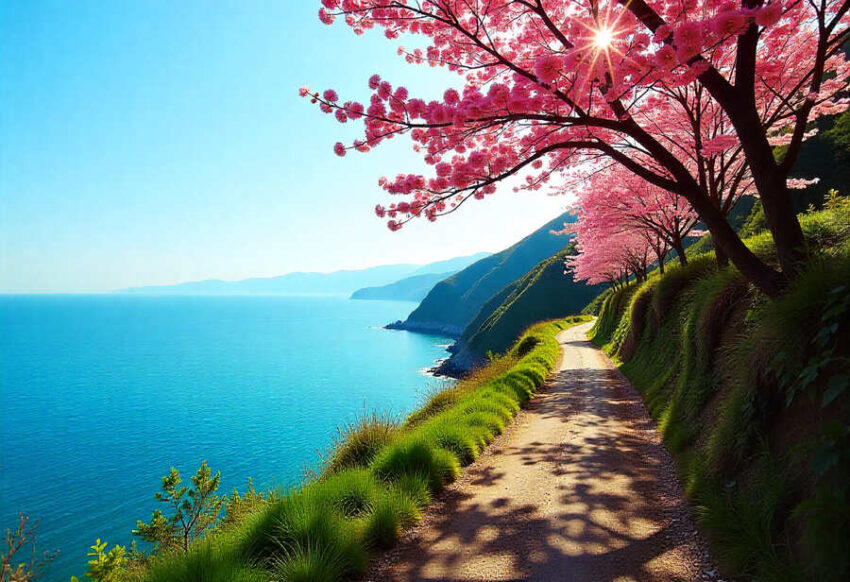Japan’s Michinoku Coastal Trail Discover One Thousand Kilometers Of Scenic Beauty And Adventure Along The Untouched Shores Of Tohoku : You Need to Know


The Michinoku Coastal Trail will offer an epic 1,000-kilometer trail along the Tohoku region’s pristine coastline, offering adventurers a unique chance to explore some of Japan’s most untouched natural environments. Running across a number of secluded parts, this trail passes by crystal clear beaches, sheer cliffs and lush forests all while showcasing the highly unique flora and fauna that can be found of the region. From the fanatic hiker to the person just wanting an excursion into nature, The Michinoku Coastal Trail gives both a visual and physical challenge that all lovers of the outdoors should experience.
Japan has long been a cultural and historical treasure, but when I first arrived in 2009, I was surprised to find that it wasn’t as flooded with foreign tourists as I had expected. Despite its rich culture, vibrant traditions, and remarkable heritage, Japan only welcomed 8.35 million international visitors in 2008, while neighboring Thailand saw over 14 million tourists.
However, Japan’s tourism scene was about to change. The launch of Abenomics, an economic revitalization program spearheaded by the Japanese government, made Japan more accessible to international tourists. As the middle class in East Asia expanded and disposable incomes rose, traveling to Japan became an attainable goal for many people in the region. The weaker yen added another incentive, making the country a more affordable destination for overseas travelers.
By 2024, Japan’s tourism figures had skyrocketed, with nearly 37 million foreign visitors contributing approximately \$53 billion to the economy. International tourism has become a key economic driver for Japan, ranking as the country’s second-largest export sector, just behind automobile exports.
Who’s Visiting Japan?
In 2024, the leading countries contributing to Japan’s tourist numbers were South Korea (8.8 million), China (7.0 million), Taiwan (6.0 million), the United States (2.7 million), and Hong Kong (2.7 million). A significant portion of visitors—around 70%—flocked to Japan’s major cities, including Tokyo, Kyoto, Nara, and Osaka, where iconic temples, shrines, and cultural landmarks are located. These historical cities are magnets for tourists drawn to their deep connection to Japan’s cultural identity.
Shopping and Exploring Beyond the Major Cities
Chinese tourists are particularly known for their shopping habits in Japan, purchasing high-quality consumer goods such as electronics, cosmetics, and clothing—items that are harder to find or more expensive back home. Conversely, travelers from countries such as the U.S., Europe, India, Singapore, and Australia are increasingly opting for off-the-beaten-path experiences. Many Australians, for example, enjoy Japan’s renowned ski resorts, including Niseko, Hakuba, and Nozawa Onsen, known for their world-class powder snow.
Embracing “Cultural Walking” in Japan
One of my most enriching experiences in Japan has been exploring its “cultural walking” routes. A few weeks ago, I had the opportunity to walk a section of the Ohenro-san pilgrimage trail on Shikoku Island. This historic route spans 1,200 kilometers and connects 88 temples, offering travelers a unique spiritual and cultural journey. The Ohenro-san pilgrimage has been an integral part of Japan’s Buddhist tradition for over 1,200 years, making it one of the country’s most significant spiritual routes.
Before embarking on this pilgrimage, it is customary to purchase a pilgrim’s hat, coat, and walking staff. Pilgrims also carry a “pilgrim book” to collect stamps at each of the temples along the way. I walked a small part of the trail, visiting eight out of the 88 temples.
Rituals and Reflections Along the Way
The Ohenro-san pilgrimage is not just about walking; it’s about engaging in a spiritual journey. At each temple, pilgrims perform specific rituals, including bowing at the temple gate, cleansing their hands and mouth at a fountain, ringing the temple bell, and offering prayers by lighting candles and incense. One of the most remarkable temples I visited was Kumadaniji, which features one of the largest Niomon gates among all pilgrimage sites in Japan. Constructed in 1687, it holds the distinction of being designated as a Cultural Property by Tokushima Prefecture.
The pilgrimage offers more than spiritual fulfillment; it’s an opportunity to experience Japan’s cultural depth and natural beauty. While some pilgrims opt for convenience by taking buses or taxis, walking the entire route allows you to deeply connect with the surroundings and achieve a sense of inner peace.
Exploring Other Historical Trails
In addition to Ohenro-san, Japan offers other exceptional walking trails that highlight the country’s rich heritage. One such route is the Nakasendo, which historically connected Tokyo (formerly Edo) to Kyoto during the Edo period. The trail is known for its well-preserved post towns, providing visitors with a glimpse of Japan’s traditional rural life. Another significant route is the Kumano Kodo, a centuries-old Shinto pilgrimage that has guided travelers for over a thousand years, leading them to the three sacred shrines of Kumano Sanzan: Hongu Taisha, Nachi Taisha, and Hayatama Taisha.
Japan’s latest long-distance hiking route, the Michinoku Coastal Trail, stretches for more than 1,000 kilometers, winding through the dramatic and rugged coastline of the Tohoku region. Created as part of the region’s recovery after the devastating 2011 earthquake, tsunami, and nuclear disaster, this trail symbolizes the resilience of the area while showcasing its stunning coastal beauty.
Preparing for Your Cultural Walking Experience
For those looking to explore Japan’s walking trails, a wealth of information is available online, along with several guided tours to help navigate these routes. However, it’s important to prepare for the challenges that come with rural travel in Japan. Although many people in major cities speak English, the language barrier can be more prominent in rural areas. Using tools like Google Translate can be immensely helpful, but patience and an open mind are key. The warm hospitality of the Japanese people, however, makes for a welcoming and enriching experience.
Japan’s Michinoku Coastal Trail offers a stunning 1,000-kilometer journey along Tohoku’s untouched shores, blending scenic beauty with adventure through dramatic landscapes and pristine nature. It’s an ideal escape for those seeking both breathtaking vistas and a challenging outdoor experience.
In other words, Japan’s walking trails offer a unique way to enjoy the culture and history of the country. By walking the Ohenro-san pilgrimage, exploring the Nakasendo, or hiking the Michinoku Coastal Trail hikes from, each has its own essence which allow for a unique and life-changing experience. If you want to travel beyond the typical tourist trail, then these trails that take a deep journey in Japan are what you should go for.
The post Japan’s Michinoku Coastal Trail Discover One Thousand Kilometers Of Scenic Beauty And Adventure Along The Untouched Shores Of Tohoku : You Need to Know appeared first on Travel And Tour World.






